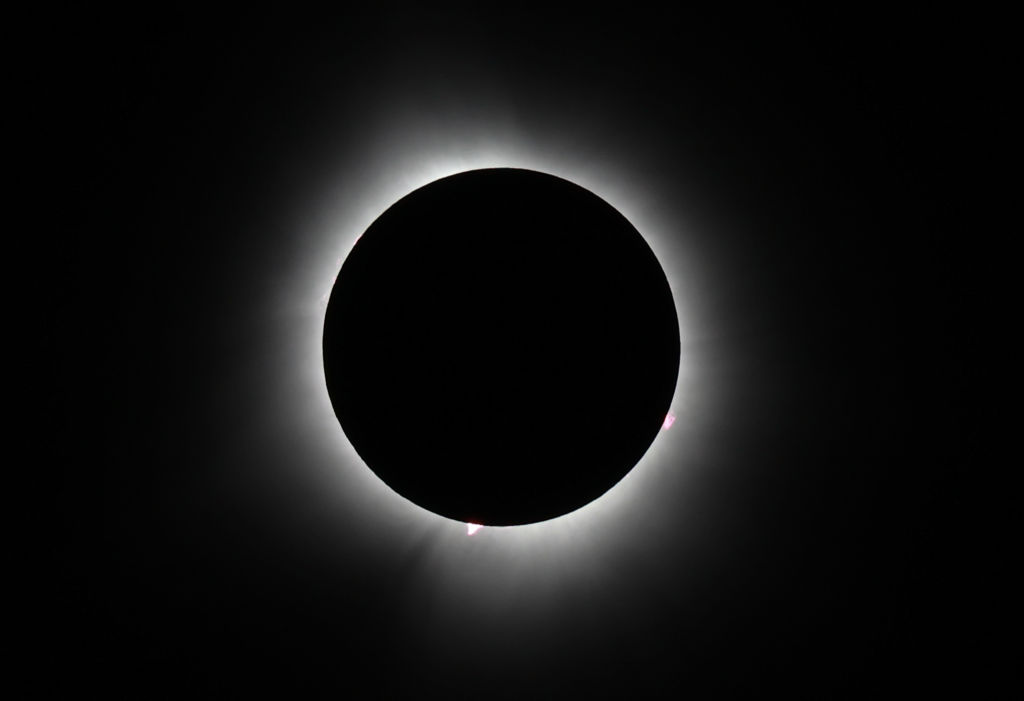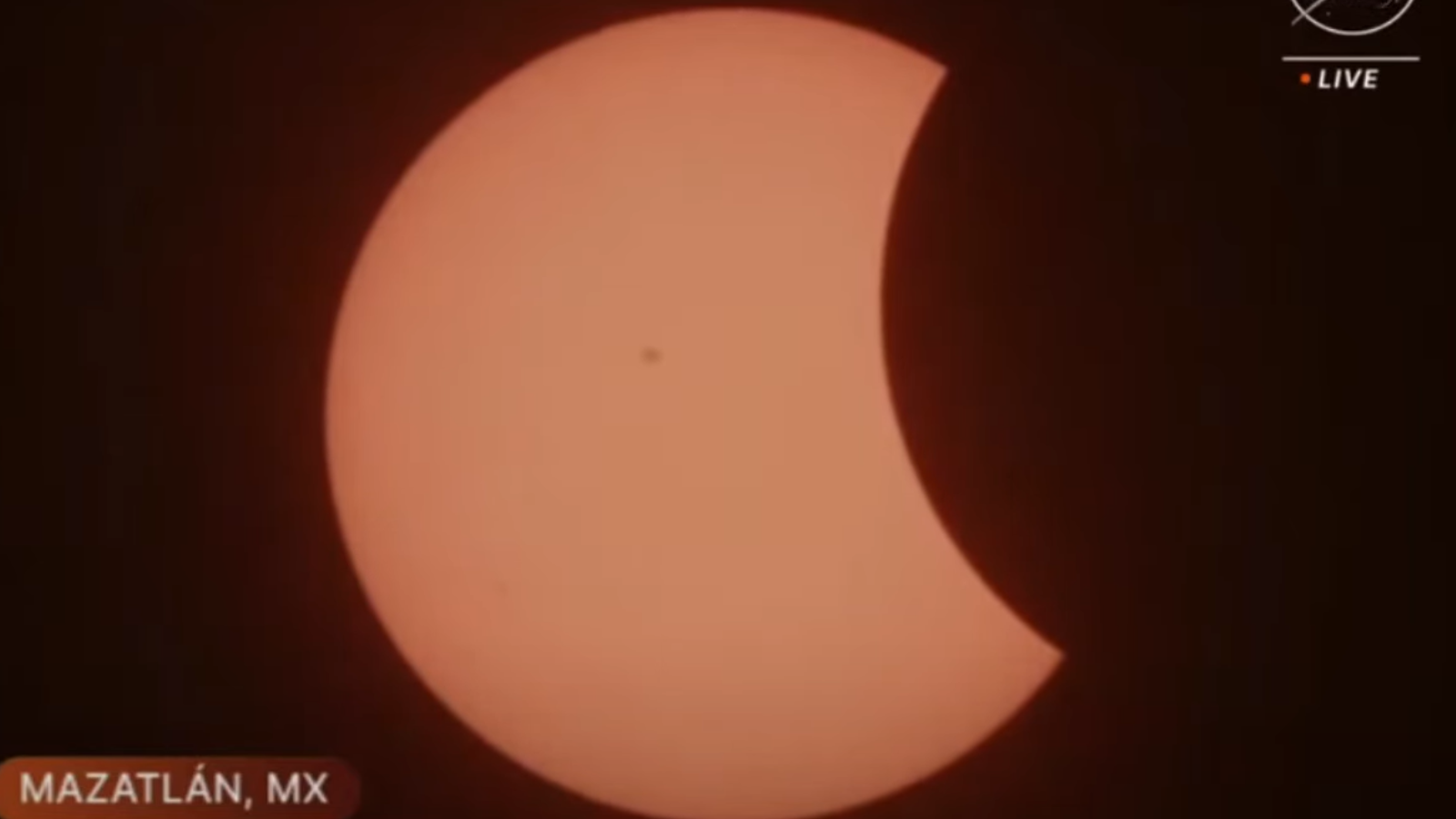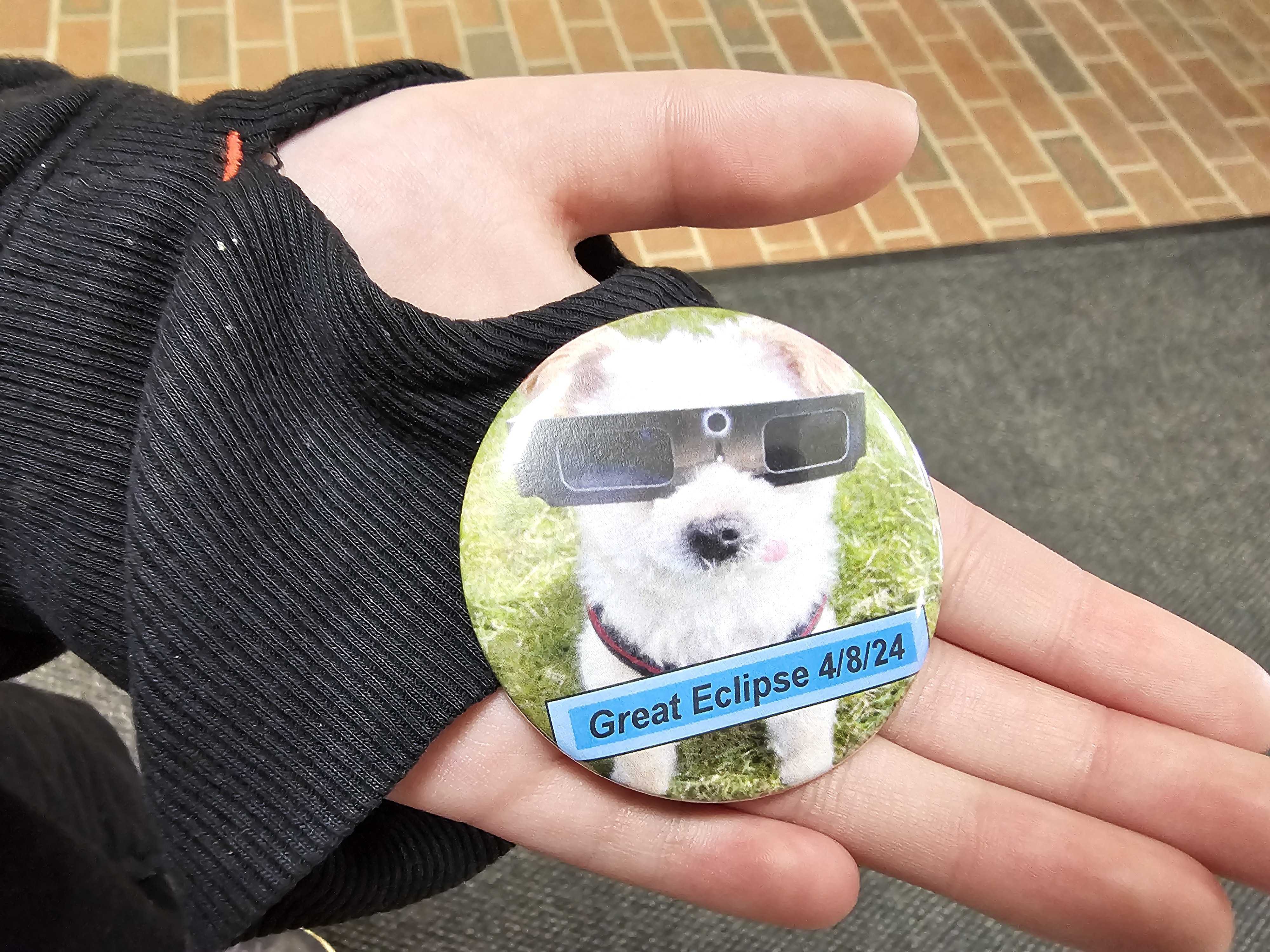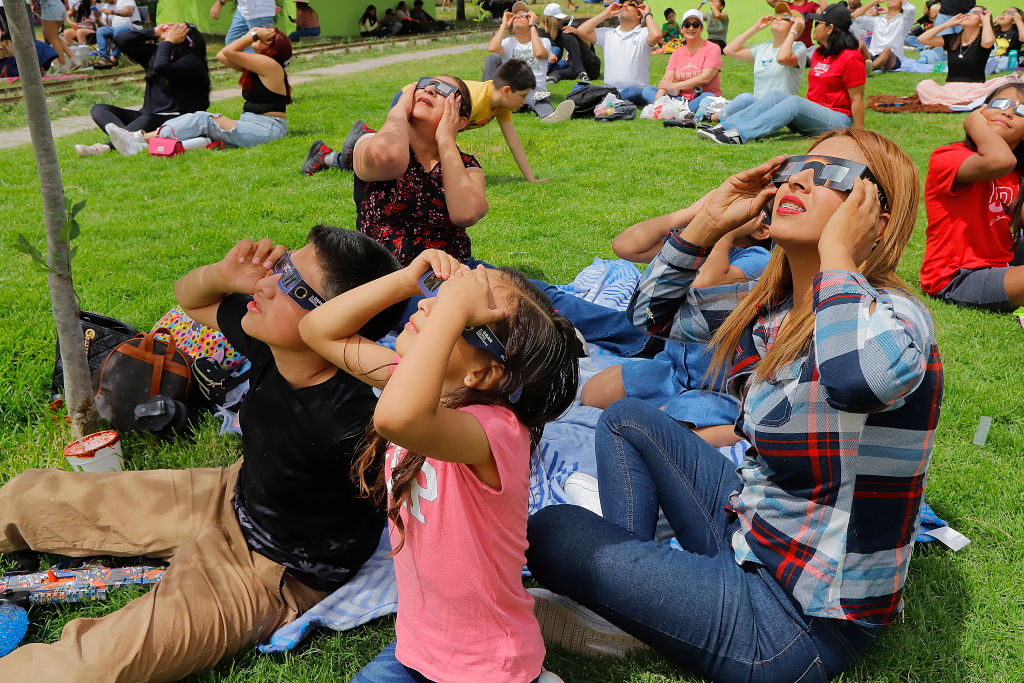Total solar eclipse 2024 thrills millions across North America (video, photos)
The total solar eclipse was one of the most-watched eclipses ever.
The moon turned daytime skies dark as it swept across North America in a total solar eclipse Monday (April 8), thrilling tens of millions of skywatchers who had their eyes glued to the skies.
All of North America and Central America experienced a partial solar eclipse, but only those located within the path of totality — an approximately 115-mile (185-kilometer) wide and 10,000-mile-long (16,000 kilometers) route — saw the moon completely obscure the sun.
Related: Total solar eclipse 2024: Pictures from around the web



The path of totality crossed four states in Mexico (Sinaloa, Nayarit, Durango and Coahuila) before sweeping over 15 U.S. states (Texas, Oklahoma, Arkansas, Missouri, Illinois, Kentucky, Tennessee, Michigan, Indiana, Ohio, Pennsylvania, New York, Vermont, New Hampshire, and Maine) and seven Canadian Provinces (Ontario, Quebec, New Brunswick, Prince Edward Island, Nova Scotia and Newfoundland).
Some 31.6 million people live in the totality path in the U.S. alone, NASA officials have said.
"It was super unreal, I didn't expect that," Diamond Cromwell, an 18-year-old freshman studying business at the State University of New York Potsdam in Potsdam, New York, which canceled classes so students and the public could watch the eclipse in a festival. "It definitely blew my expectations out of the park."
Cromwell almost missed totality the 3 minutes and 14 seconds that started at 3:24 p.m. EDT where the moon blocked the sun over Potsdam, leaving a ring of the sun's corona shining through a thin layer of clouds. "I had my [eclipse] glasses on, I didn't know that during totality you could actually take your glasses off." Another spectator urged him to take them off and he was able to see the view. "It was good, really good."
Breaking space news, the latest updates on rocket launches, skywatching events and more!
What causes a total solar eclipse?

Submit your photos! If you saw a photo of the April 8 total solar eclipse and would like to share it with Space.com's readers, send photos, videos, comments, and your name, location and content usage permission release to spacephotos@space.com.
A total solar eclipse occurs when the moon appears the same size in the sky as the sun, or slightly larger, so fully covers the disk of the sun, giving observers a view of the sun's outer atmosphere, the corona.
The apparent size of the moon in the sky — and whether it can completely cover the sun's disk during an eclipse — depends on the moon's distance from Earth. The moon has a slightly elliptical orbit around Earth, so at two points each month, it is farthest (apogee) and closest (perigee) to Earth, making the moon appear slightly smaller and slightly larger than average in our sky.
The path of totality made landfall in Mazatlan, Mexico, at around at 9:51 a.m. local time (12:51 p.m. EDT, 16:51 GMT). At 10:21 local time (13:21 EDT/17:21 GMT) this region became the first to experience totalityIt took about 3 hours and 16 minutes for the moon's shadow to cross Earth before it departed at sunset in the Atlantic Ocean north of the Azores.
In the lead-up to totality in Poplar Bluff, Missouri, where TechRadar staffer and Space.com contributor John Loeffler was stationed waiting for the eclipse, there was a great atmosphere and camaraderie among eclipse watchers.
"I compare this to a tailgate atmosphere," said Paul Ruff, who traveled from Iowa City, IA to Poplar Bluff, told Loeffler. "People are very nice, sharing their equipment, showing you what they’re seeing."
Not all of the millions of people who traveled to the path of totality to view this event were rewarded with an unobscured view of the total solar eclipse. This is a natural event, and nature doesn't always play ball.
Space.com's Daisy Dobrijevic traveled to Rochester, New York, from the U.K. to see the moon begin to cover the sun at around 14:15 EDT (18:15 GMT). The event was slightly muted by uncooperative cloud coverage.
Dobrijevic noted that even with the clouds, onlookers got to see some fascinating eclipse effects as the obscuration of the moon caused the clouds to change hue. The cloud coverage didn't mute the crowd as the eclipse began either.
"A cheer erupted as people caught the first glimpse of the total solar eclipse from Rochester, and the moon started taking a bite out of the sun!" Dobrijevic said.
When is the next total solar eclipse?
Eclipse chasers won't have to wait too long until the next solar eclipse on Aug. 12, 2026, which is visible from Greenland, Iceland, the Atlantic Ocean, and Spain. At the point of the greatest eclipse close to Iceland, totality will last 2 minutes and 18 seconds.
With regards to North America, the next total solar eclipse will happen on March 30, 2033, and will be seen in Alaska. After this, the U.S. states of Montana, South Dakota, North Dakota, and areas of Canada will experience a total solar eclipse on Aug. 23, 2044.
Almost exactly a year later, on Aug. 12, 2045, a total solar eclipse will be visible in California, Nevada, Utah, Colorado, New Mexico, Oklahoma, Kansas, Texas, Arkansas, Missouri, Mississippi, Louisiana, Alabama, Georgia, and Florida, as well as the Caribbean and South America.
Editor's note: Space.com senior writer Rob Lea and writer Alex Cox contributed to this story from London, U.K. Editor-in-Chief Tariq Malik contributed to this story from Potsdam, New York. Space.com contributor John Loeffler contributed to this story from Poplar Bluff, Missouri.
Submit your story photos! If you capture a photo of the April 8 total solar eclipse or any of these strange effects and would like to share it with Space.com's readers, send photos, videos, comments, and your name, location and content usage permission release to spacephotos@space.com.

Daisy Dobrijevic joined Space.com in February 2022 having previously worked for our sister publication All About Space magazine as a staff writer. Before joining us, Daisy completed an editorial internship with the BBC Sky at Night Magazine and worked at the National Space Centre in Leicester, U.K., where she enjoyed communicating space science to the public. In 2021, Daisy completed a PhD in plant physiology and also holds a Master's in Environmental Science, she is currently based in Nottingham, U.K. Daisy is passionate about all things space, with a penchant for solar activity and space weather. She has a strong interest in astrotourism and loves nothing more than a good northern lights chase!



